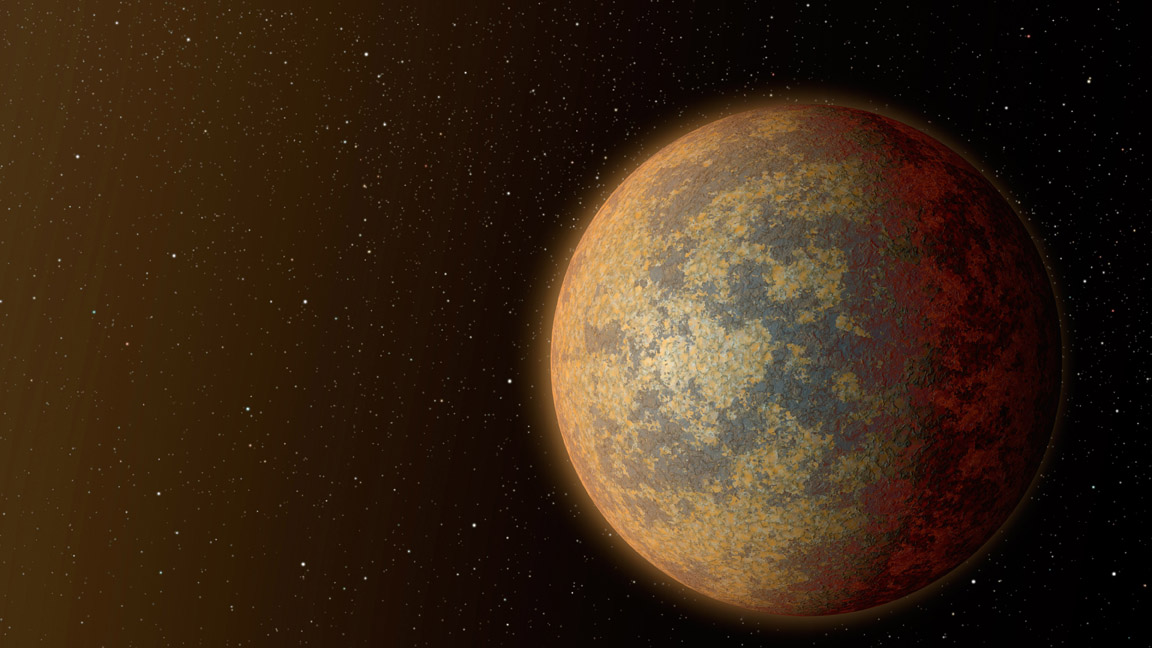Image List
-

This artist's rendition shows one possible appearance for the planet HD 219134b, the nearest rocky exoplanet found to date outside our solar system. The planet is 1.6 times the size of Earth, and whips around its star in just three days. Scientists predict that the scorching-hot planet -- known to be rocky through measurements of its mass and size -- would have a rocky, partially molten surface with geological activity, including possibly volcanoes.
NASA/JPL-Caltech -

This artist's conception shows the silhouette of a rocky planet, dubbed HD 219134b, as it passes in front of its star. At 21 light-years away, the planet is the closest outside of our solar system that crosses, or transits, its star -- a bonus for astronomers because transiting planets are easier to study. The planet, which is about 1.6 times the size of Earth, is also the nearest confirmed rocky planet outside our solar system. It orbits a star that is cooler and smaller than our sun, whipping snuggly around it in a mere 3 days. The proximity of the planet to the star means that it would be scorching hot and not habitable.
NASA/JPL-Caltech